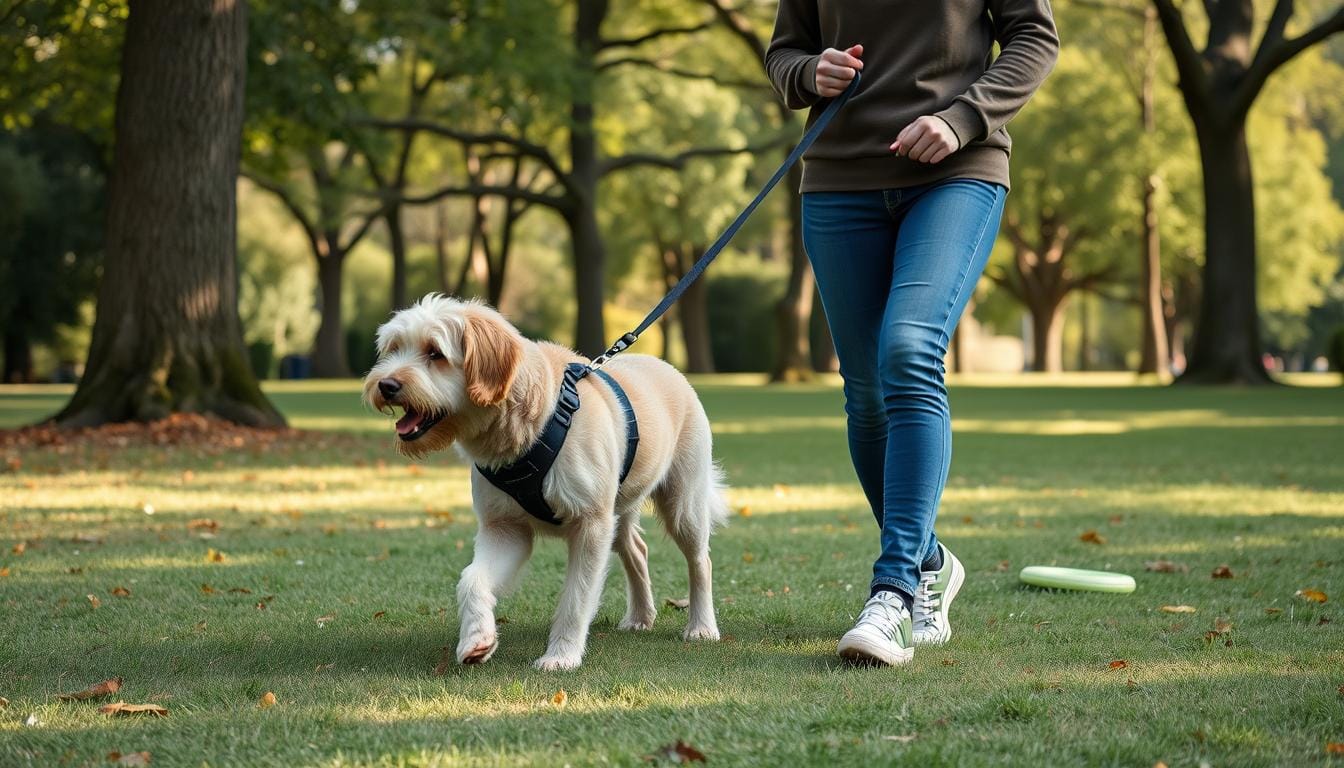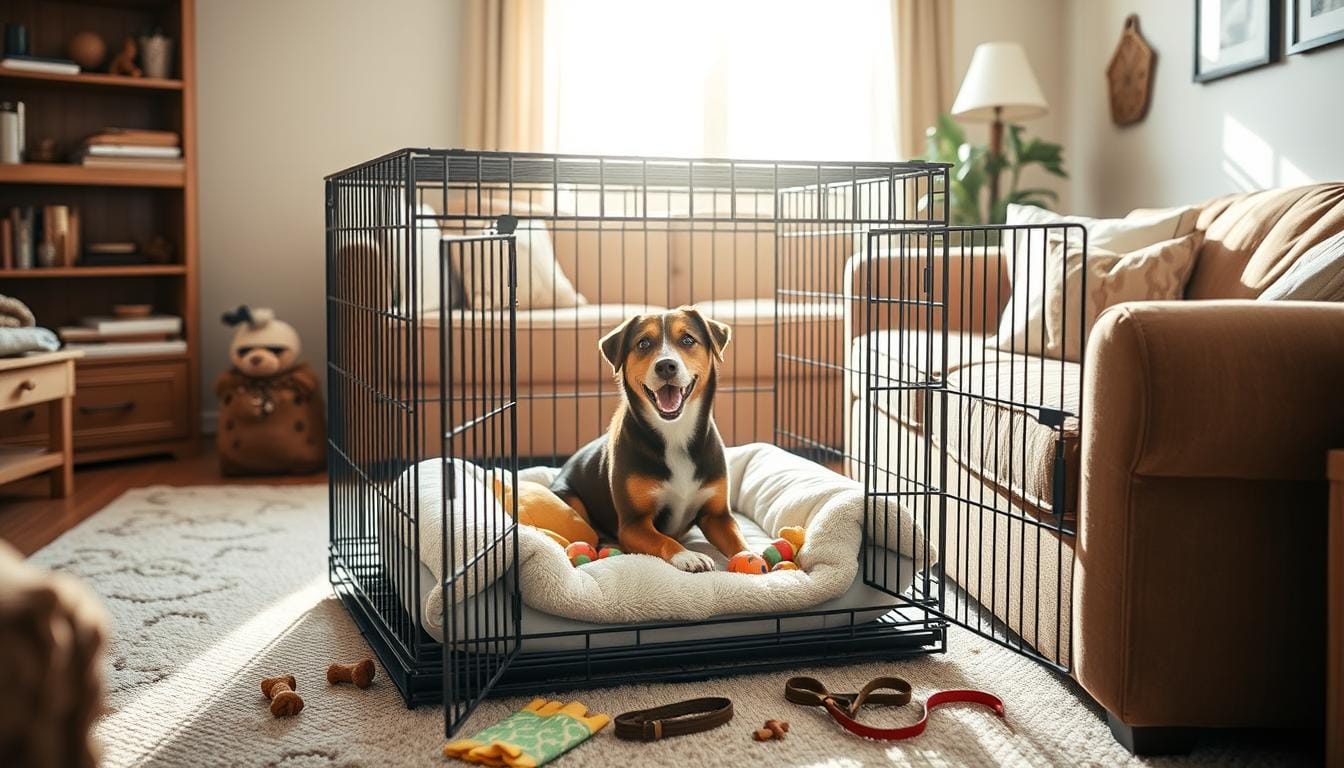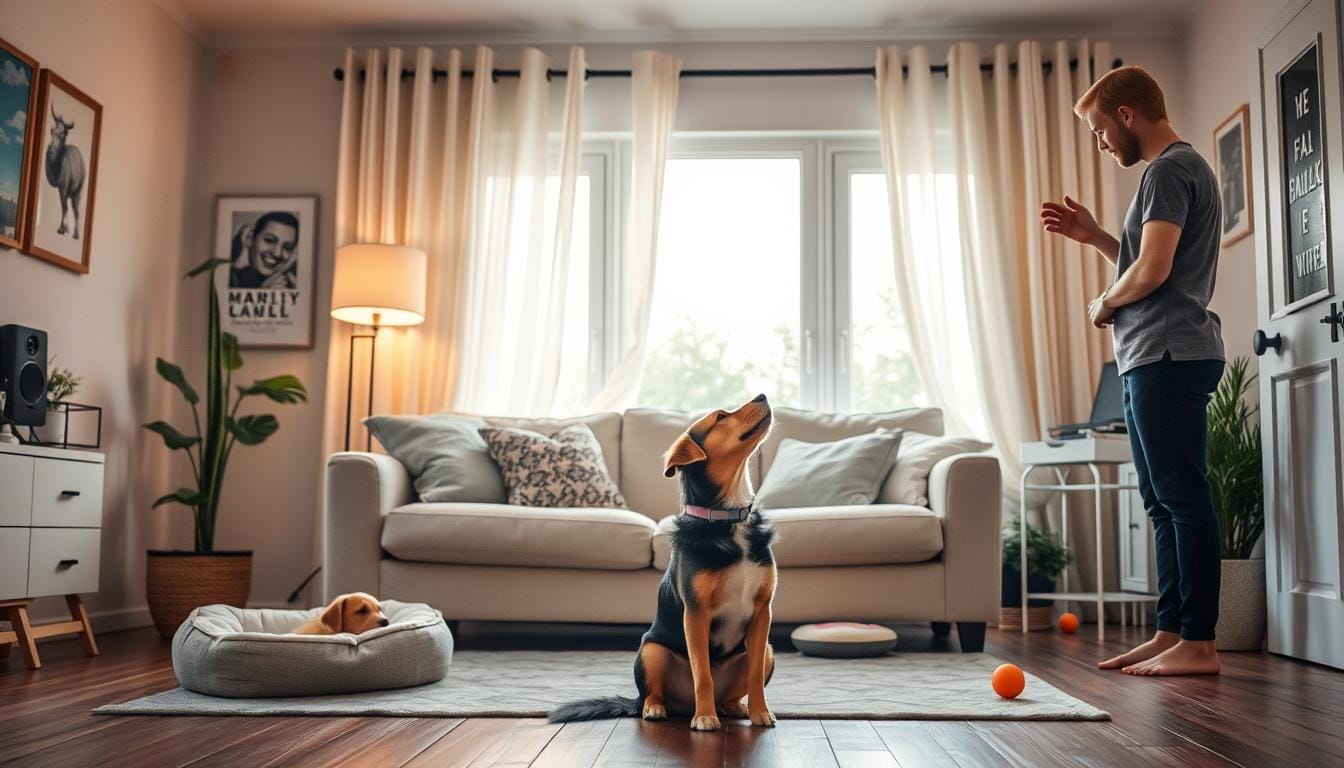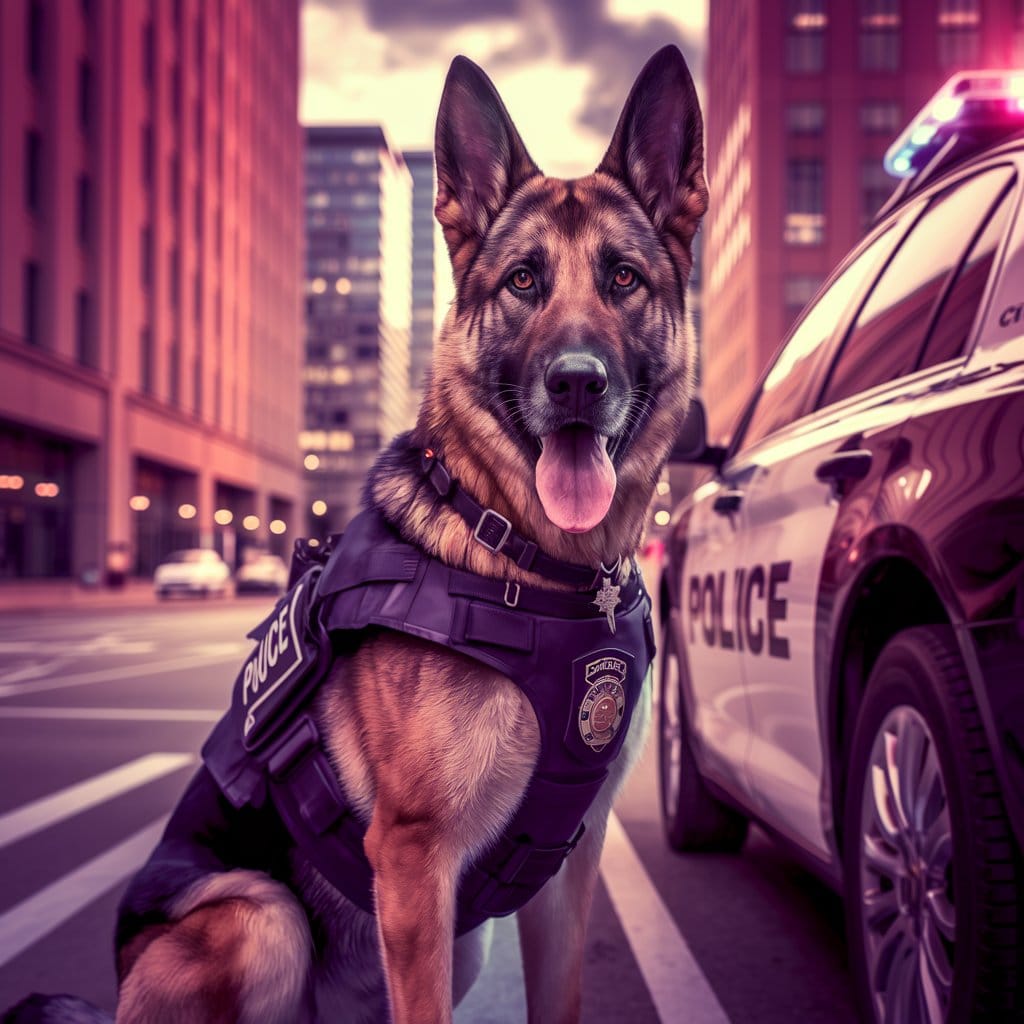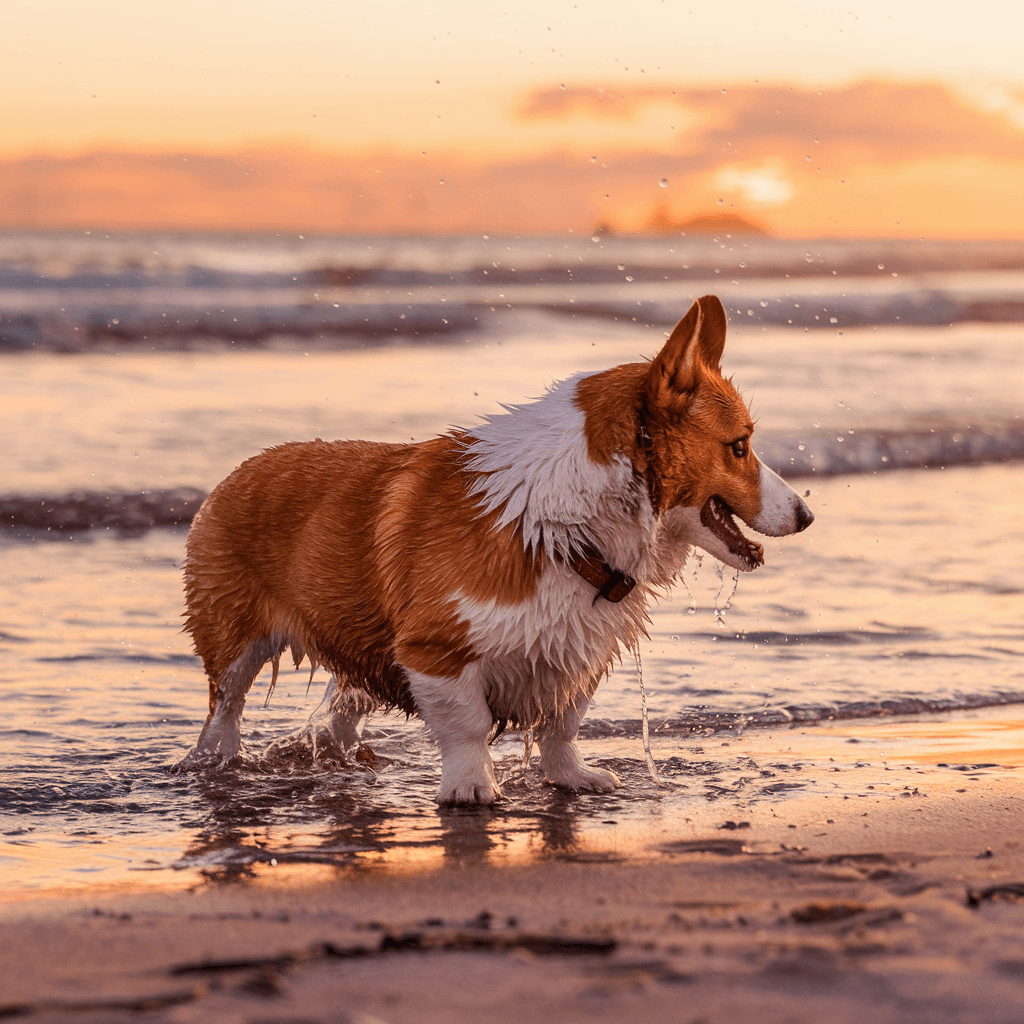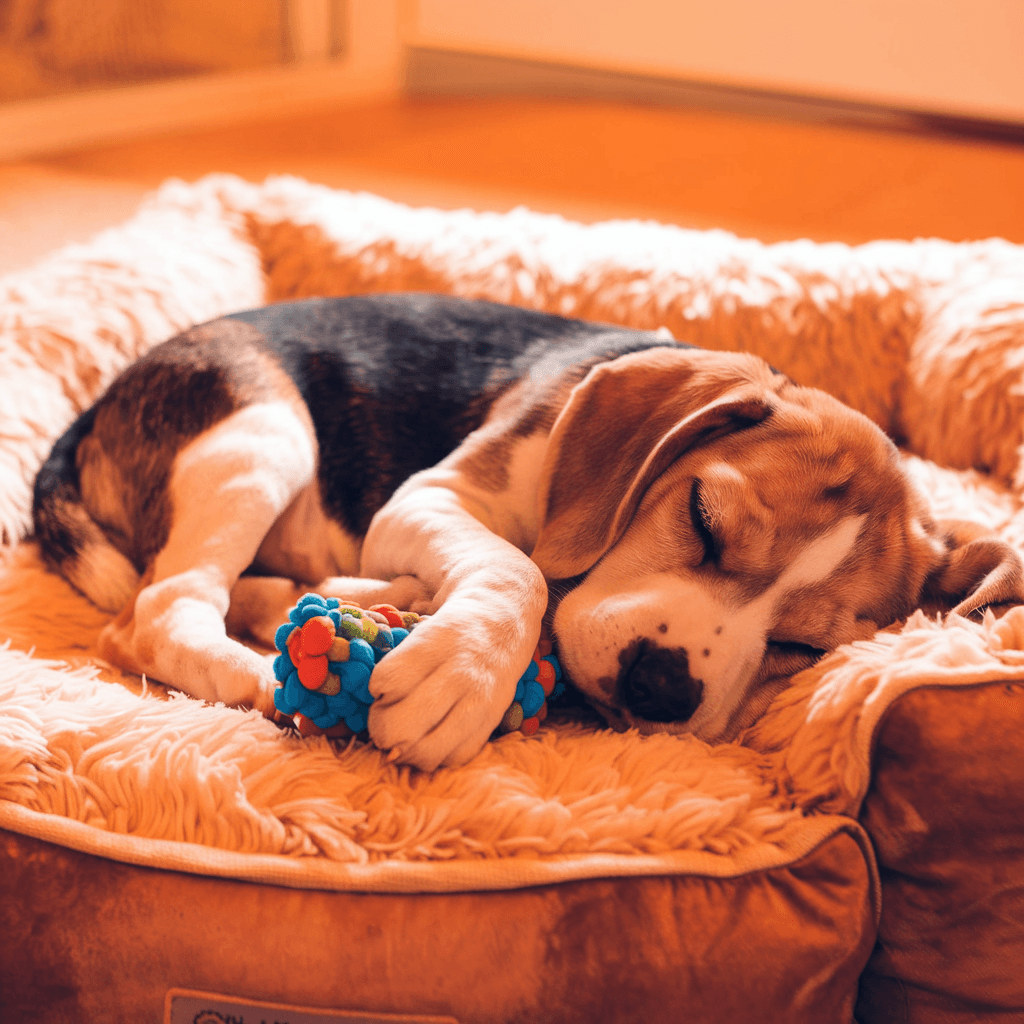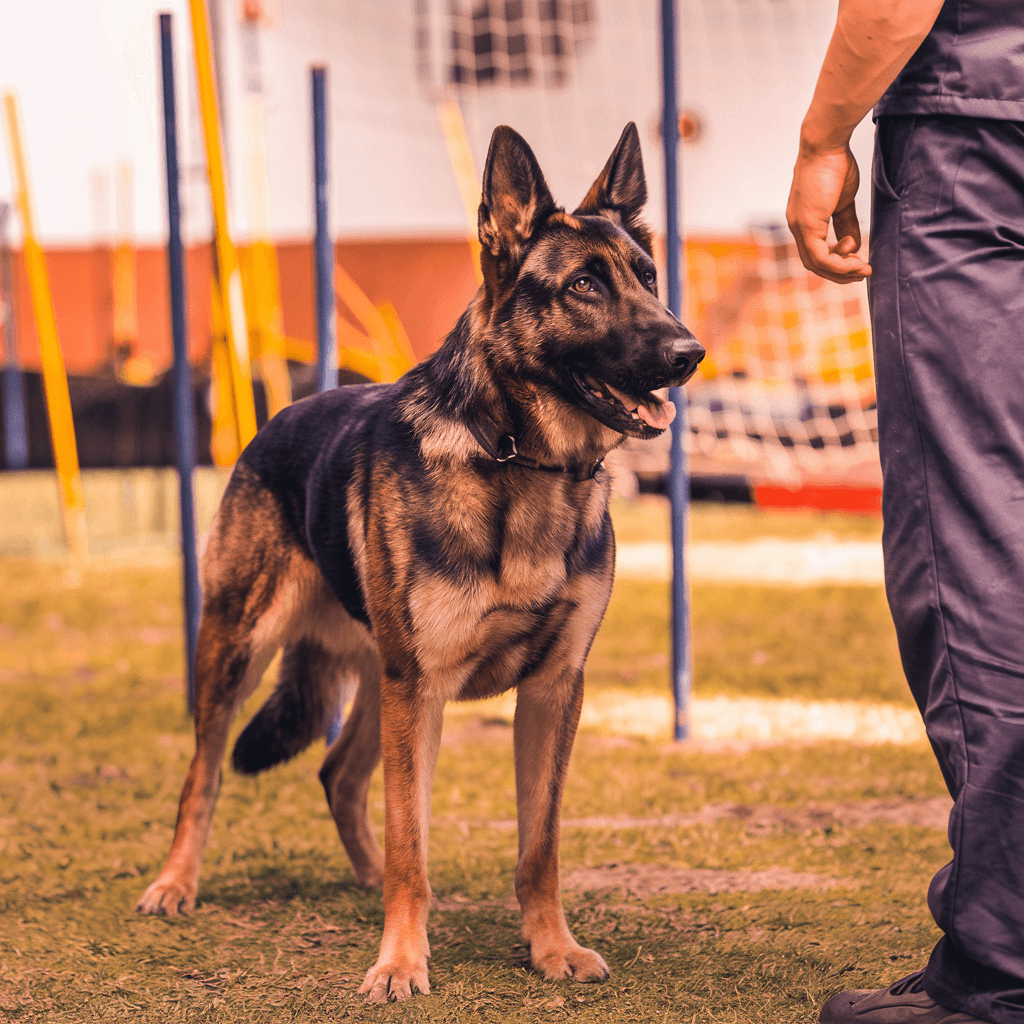What sets Rottweilers apart from other large dog breeds? These German dogs are known for their loyalty and strength. They have a bite force of around 328 pounds. This shows they are not just strong but also have a strong-willed personality.
Rottweilers have a long history, dating back to ancient Roman times. They have evolved into the versatile working dogs we know today. Their intelligence and protective nature make them great companions for those who are willing to train and socialize them.
Rottweilers are among the top 10 most popular breeds in the United States. They weigh between 85-130 pounds and live 8-10 years. They need regular exercise and mental stimulation to be happy.
If you’re thinking about getting a Rottweiler or just want to learn more, it’s important to know their unique traits and care needs. We’ll cover everything from their physical characteristics to their temperament and health needs in this guide.
Key Takeaways
- Rottweilers are strong, loyal dogs originating from Germany
- They rank among the top 10 most popular breeds in the US
- Rottweilers weigh 85-130 pounds and live 8-10 years on average
- Early socialization and training are crucial for this breed
- They require regular exercise and mental stimulation
- Rottweilers need proper care to manage potential health issues
- They can adapt to various living environments with proper attention
Introduction to the Rottweiler Breed
The Rottweiler, a powerful working dog breed, comes from Germany. They have a strong build and a black coat with tan markings. Rottweilers are tall, 22-27 inches, and heavy, weighing 90-110 pounds.
Rottweilers, or “Rotties,” have a long history, starting in ancient Roman times. They are good at many things, like herding and working in police and military. They were officially recognized in Germany in 1901 and in the US in 1931.
Rottweilers are known for being strong yet gentle. They are loyal, confident, and protective. They love their families but are careful with strangers, making them great protectors. It’s important to socialize them early and train them well.
“Rottweilers are gentle giants with hearts of gold, but they need a firm hand and lots of love to reach their full potential.”
Rottweilers need lots of exercise and mental challenges. Activities like agility or scent work keep them happy. With the right care, they live 8-10 years, bringing joy and protection to their families.
Rottweiler History and Origin
The rottweiler history goes back over two thousand years. It’s one of the oldest German dog breeds. Their ancestors were Roman Empire mastiffs, used for guarding.
Ancient Roman Roots
Rottweilers come from ancient Roman mastiffs. These dogs helped herd and protect. They went with the Roman army across Europe, guarding livestock and camps.

Development in Germany
In Rottweil, Germany, the breed really took shape. They were called “butcher’s dogs” for protecting livestock and pulling carts. This time made them strong and loyal.
Modern Roles and Recognition
Today, rottweilers do many things. They are police dogs, search and rescue, and family pets. The American Kennel Club recognized them in 1931, making them famous among German breeds.
| Year | Event |
|---|---|
| 1921 | Establishment of Allgemeiner Deutscher Rottweiler Klub (ADRK) |
| 1931 | American Kennel Club officially recognizes Rottweiler breed |
| 1973 | Formation of American Rottweiler Club (ARC) |
| Mid-1990s | Rottweiler becomes second most popular breed in the U.S. |
The rottweiler’s story is amazing. From Roman war dog to family pet, it shows their adaptability. Today, it’s a symbol of German dog breed history.
Physical Characteristics of Rottweilers
Rottweilers are known for their impressive appearance. They stand out among large dog breeds. Their look is a mix of strength and elegance.
Size and Weight
Rottweilers are big dogs, with males being taller and heavier than females.
| Gender | Height (inches) | Weight (pounds) |
|---|---|---|
| Male | 24-27 | 95-135 |
| Female | 22-25 | 80-100 |
Coat Color and Texture
Rottweilers have a short, dense coat. It’s easy to keep clean. Their black coat has rust or mahogany markings on the face, chest, and legs. This creates a stunning contrast.
Distinctive Features
The breed has a broad head and powerful muzzle. Their almond-shaped brown eyes are striking. Their muscular body shows their endurance and strength, thanks to their working dog background. Rottweilers have a natural tail, though some used to dock it.
Rottweilers embody strength and loyalty in their powerful physique and alert expression.
These traits make Rottweilers one of the most recognizable large dog breeds. Their imposing yet elegant look is why they’re loved by dog lovers everywhere.
Rottweiler Temperament and Personality
Rottweilers are known for their confident and loyal nature. They have a unique temperament that makes them stand out. Their strong protective instincts and loving disposition towards their families create a balanced personality that many dog lovers admire.
Rottweilers are intelligent and highly trainable. They quickly master basic commands and enjoy learning new tricks. This makes them excellent companions for dedicated owners. Their confidence shines through in various situations, as they are less likely to be afraid of things like thunderstorms compared to other breeds.

Despite their imposing size, Rottweilers often display a gentle nature towards their human families. They are known for their loving and doting tendencies, which contribute to their popularity as family pets. In fact, the American Kennel Club ranked Rottweilers as the eighth most popular dog breed in 2021.
“Rottweilers are gentle giants with hearts of gold. Their loyalty and affection towards their families know no bounds.”
When it comes to strangers, Rottweilers tend to be cautious and protective. This makes them excellent watchdogs, always alert and ready to defend their households. Early socialization is crucial to ensure they develop proper behavior around unfamiliar people and other animals.
| Trait | Description |
|---|---|
| Confidence | Less likely to be afraid of common triggers |
| Protectiveness | Strong instinct to defend family |
| Intelligence | Quick learners, enjoy training |
| Gentleness | Loving towards family members |
| Alertness | Excellent watchdogs |
Training and Socialization for Rottweilers
Rottweiler training is key to raising a well-behaved and friendly pet. Start training between 6 weeks and 6 months old. Early training lays the groundwork for a well-adjusted dog.
Early Puppy Training
Rottweiler puppies do best with short, five-minute training sessions. Teach basic commands like sit, down, stand, and paw shaking. Start potty training around five to eight weeks to avoid future problems.
Obedience Training Techniques
Positive reinforcement is the best way to train a Rottweiler. Use treats, toys, or praise to reward good behavior. Avoid physical punishment or yelling, as it can damage your bond. Training requires patience and consistency.
Socialization Importance
Socialization is vital for a Rottweiler’s behavior. The key period is from 3 to 14 weeks. Introduce your puppy to different people, places, and experiences. This helps prevent fear and aggression later on.
| Age | Training Focus | Socialization Activities |
|---|---|---|
| 6-8 weeks | Basic commands, potty training | Gentle handling, household sounds |
| 8-12 weeks | Leash training, bite inhibition | Supervised puppy playdates, car rides |
| 12-16 weeks | Advanced commands, recall | Obedience classes, park visits |
Good socialization and training make a well-rounded Rottweiler. Sign up for socialization classes for structured learning and socializing. Always watch interactions and consider your puppy’s comfort during new experiences.
Exercise Requirements and Activity Levels
Rottweilers need lots of exercise to stay healthy and happy. They should get about 80 minutes of activity every day. This keeps them physically and mentally fit.
Exercise needs for Rottweilers are similar to other big, energetic dogs. Here’s how they compare:
| Breed | Daily Exercise Requirement |
|---|---|
| Rottweiler | 80 minutes |
| Golden Retriever | 90-120 minutes |
| German Shepherd | 120 minutes |
| Doberman | 120 minutes |
| Labrador | 90 minutes |
Rottweiler puppies need less exercise to avoid getting too tired. A good start is 5 minutes of walks for every month of age. As they get older, slow down the exercise to protect their muscles and joints.
- Brisk walks
- Fetch games
- Swimming
- Obedience training
- Scent work
Regular exercise helps prevent obesity and bad behaviors in Rottweilers. Use a dog activity monitor to make sure they get enough exercise.
Rottweiler Health Concerns and Care
Rottweiler health is key to their well-being. We’ll look at common health issues, how to prevent them, and the best diet for your Rottweiler.
Common Health Issues
Rottweilers often face health problems specific to their breed. Hip and elbow dysplasia can lead to arthritis if not treated. They are also at risk for osteosarcoma, a bone cancer that needs early detection.
Gastric dilatation-volvulus, or bloat, is another serious issue due to their deep chests. This can be life-threatening if not treated quickly.
Preventative Care
Regular vet visits are crucial for your Rottweiler’s health. Catching problems like entropion and subaortic stenosis early can prevent bigger issues. Keeping your Rottweiler at a healthy weight helps avoid joint problems.
Nutrition and Diet
Good nutrition is vital for your Rottweiler’s health. Feed them high-quality, AAFCO-approved food that matches their life stage. Portion control is important to avoid obesity, which worsens joint problems.
Adding omega fatty acids for coat health and joint supplements with glucosamine and chondroitin is beneficial. A balanced diet supports their muscles and overall health.
| Health Concern | Preventative Measure |
|---|---|
| Joint Issues | Weight management, joint supplements |
| Cancer | Regular check-ups, early detection |
| GDV (Bloat) | Smaller, frequent meals, avoid exercise after eating |
Grooming Needs for Rottweilers
Grooming a Rottweiler might seem tough, but it’s doable. They have a short, dense coat that sheds a bit all year. But they shed more in spring and fall. Brush your Rottweiler two to three times a week to keep shedding under control and spread natural oils.
Bathing your Rottweiler every 6 to 8 weeks with hypoallergenic shampoo is best. This keeps their coat healthy without losing essential oils. In heavy shedding times, a “blow-out” can help.
But grooming is more than just coat care. Trim their nails monthly to avoid overgrowth and weight issues. Brush their teeth daily or 2-3 times a week for dental health. Also, clean their ears weekly to avoid infections.
| Grooming Task | Frequency |
|---|---|
| Brushing | 2-3 times per week |
| Bathing | Every 6-8 weeks |
| Nail Trimming | Monthly |
| Teeth Brushing | Daily or 2-3 times per week |
| Ear Cleaning | Weekly |
Grooming is a chance to spot skin issues or allergies in Rottweilers. If you see rashes, too much itching, or hair loss, see your vet. With the right care, your Rottweiler will look and feel great.
Rottweilers as Family Pets
Rottweilers can be great family pets if they’re well-trained and socialized. They are known for being gentle and patient, especially with kids. These dogs often form strong bonds with their families, offering both protection and love.
Interactions with Children
Rottweilers are often seen as good family dogs because they handle children well. But, because of their size and strength, it’s important to watch them closely, especially with young kids. Teach children how to safely interact with these big dogs to avoid accidents.
Compatibility with Other Pets
Early socialization is crucial for Rottweilers to get along with other pets. They can live well with other animals if they’re introduced early. Some Rottweilers might be aggressive towards other dogs, especially those of the same sex. Training and positive reinforcement can help manage this.
As family dogs, Rottweilers love being around people and learn fast. Short, frequent training sessions keep them interested. A well-trained Rottweiler can be a loyal, gentle giant in your home for 12-14 years. They are a big commitment for families ready for the challenge.







